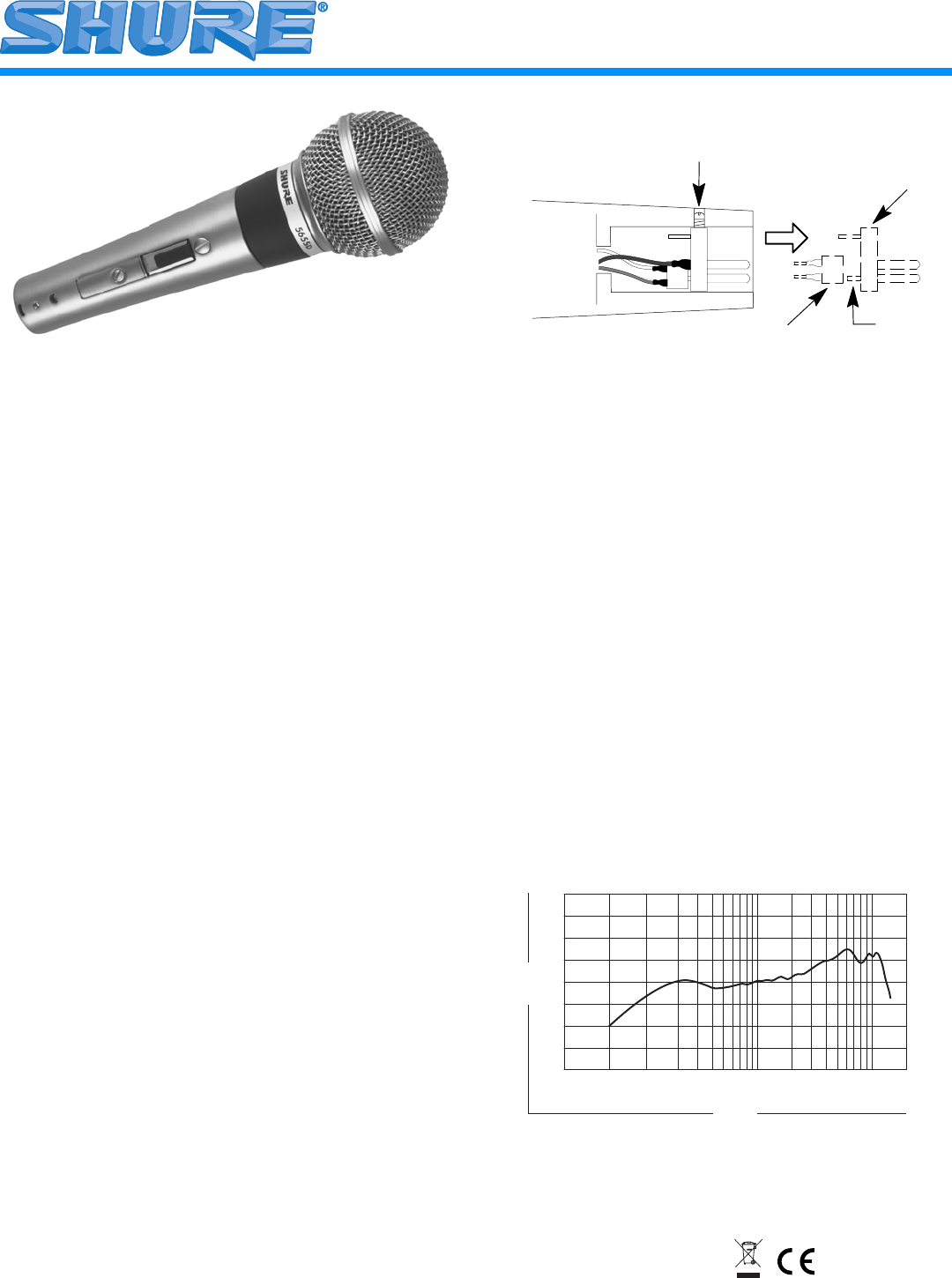
Model 565SD User Guide
©2005, Shure Incorporated
27
C3060 (Rev. 7)
Printed in U.S.A.
GENERAL
The UNISPHERE I 565 Series microphones are dual-imped-
ance, unidirectional dynamic microphones with a strong,
wire-mesh, spherical front grille that contains a highly effective
wind and “pop“ filter.
Shipped connected for low-impedance operation, 565 Series
microphones provide excellent vocal or speech reproduction on
lecterns and stages, and are a popular choice for use in public au-
ditoriums, churches, convention halls, and schools.
FEATURES
• Selectable dual impedance operation
• Silent magnetic reed on/off switch with lock-on option
• Cardioid dynamic
• Frequency response: 50 to 15,000 Hz
MODEL VARIATIONS
Model 565SD-CN: Supplied with 6.1 m (20 ft) XLR cable.
Model 565SD-LC: No cable supplied.
CONNECTIONS
When using the microphone with a balanced input, pins 2 and 3
are the audio signal carriers. When using the microphone with an
unbalanced input, use a cable wired with pin 2 as the signal carrier
and pin 3 connected to the cable shield (ground), such as the
Shure C20HZ high-impedance cable.
IMPEDANCE SELECTION
The microphone is shipped connected for low impedance oper-
ation. To change to high impedance, proceed as follows (refer to
Figure 1):
1. Remove plug element at receptacle end of microphone by
turning slotted setscrew in (counterclockwise) and carefully
withdrawing plug element from case.
2. Disconnect 2-terminal impedance selection socket from rear
of plug element.
3. Reconnect 2-terminal impedance selection socket in reverse
position so that pin 3 of plug element is inserted in socket ter-
minal “H” (White).
4. Reassemble plug element into microphone and seal setscrew
securely by turning out (clockwise).
IMPEDANCE SELECTION-
RECEPTACLE END OF MICROPHONE
FIGURE 1
POLARITY
All cables and microphones should be tested to ensure that they
have the same polarity. To test two microphones and/or their ca-
bles for proper polarity, connect them to an amplifier and talk or
sing into them while holding them three or four inches apart. The
sound from the speakers should be the same when talking into ei-
ther microphone or directly between them. If the sound drops dras-
tically, or if a dead spot is found when talking between the two
microphones, either the microphones or their cables have opposite
polarity.
To change the polarity of a microphone cable, either use a
Shure A15PRS phase reverser or interchange the wires connected
to pins 2 and 3 of the three-pin connector at one end of the cable.
To change the polarity of a microphone, the microphone cartridge
leads must be interchanged. This should be performed by your
dealer, the Shure Factory Service Department, or other qualified
service personnel.
SPECIFICATIONS
Type
Dynamic
Frequency Response
50 to 15,000 Hz
SET SCREW
IMPEDANCE
SELECTION SOCKET
PLUG
ELEMENT
PIN 3
20 200001000 1000050 100
9876543298765432
+10
0
–10
Hz
dB
-20
+20
